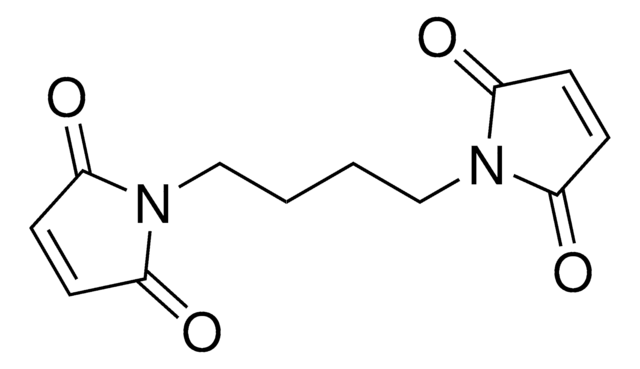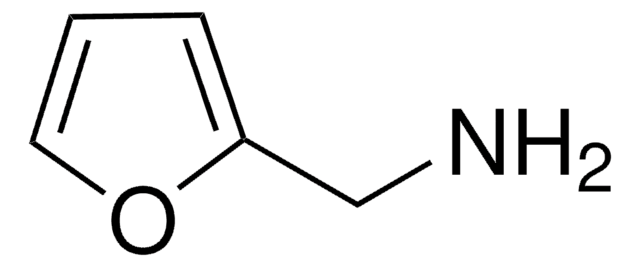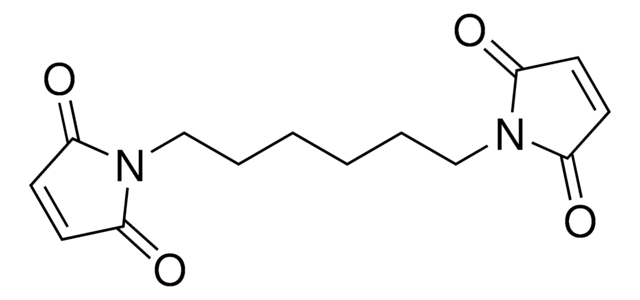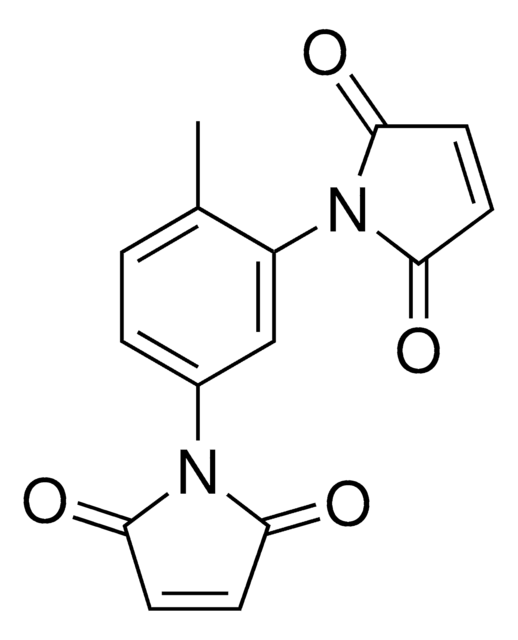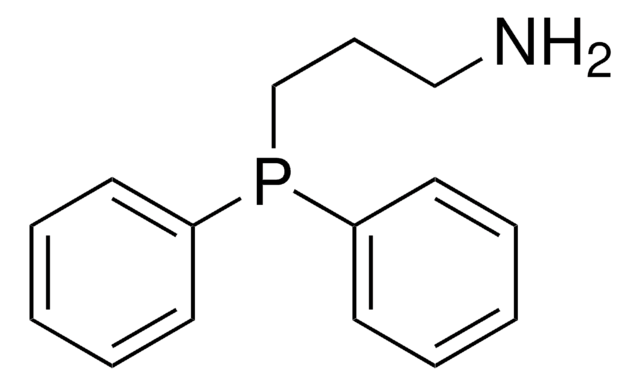803561
BMOE (bis-maleimidoethane)
Synonym(e):
1,1′-ethane-1,2-diylbis(1H-pyrrole-2,5-dione), N,N′-Ethylenebismaleimide, BMOE, Ethylenebismaleimide
About This Item
Empfohlene Produkte
Form
powder
Mol-Gew.
220.18
Eignung der Reaktion
reagent type: cross-linking reagent
Lagerbedingungen
desiccated
Löslichkeit
DMSO or DMF: soluble
Versandbedingung
ambient
Lagertemp.
2-8°C
SMILES String
O=C(C=CC1=O)N1CCN2C(C=CC2=O)=O
InChI
1S/C10H8N2O4/c13-7-1-2-8(14)11(7)5-6-12-9(15)3-4-10(12)16/h1-4H,5-6H2
InChIKey
PUKLCKVOVCZYKF-UHFFFAOYSA-N
Allgemeine Beschreibung
Leistungsmerkmale und Vorteile
- Reactive groups: maleimide (both ends)
- Reactive towards: sulfhydryl groups
- Short (8.0Å), sulfhydryl-to-sulfhydryl crosslinker, composed of maleimide groups and 7-atom spacer arm
- Shortest bismaleimide crosslinker available for close proximity crosslinking
- Water-insoluble—dissolve first in DMF or DMSO, then add to aqueous reaction buffers
- Noncleavable
Vorsicht
Lagerklassenschlüssel
11 - Combustible Solids
WGK
WGK 3
Flammpunkt (°F)
Not applicable
Flammpunkt (°C)
Not applicable
Analysenzertifikate (COA)
Suchen Sie nach Analysenzertifikate (COA), indem Sie die Lot-/Chargennummer des Produkts eingeben. Lot- und Chargennummern sind auf dem Produktetikett hinter den Wörtern ‘Lot’ oder ‘Batch’ (Lot oder Charge) zu finden.
Besitzen Sie dieses Produkt bereits?
In der Dokumentenbibliothek finden Sie die Dokumentation zu den Produkten, die Sie kürzlich erworben haben.
Kunden haben sich ebenfalls angesehen
Unser Team von Wissenschaftlern verfügt über Erfahrung in allen Forschungsbereichen einschließlich Life Science, Materialwissenschaften, chemischer Synthese, Chromatographie, Analytik und vielen mehr..
Setzen Sie sich mit dem technischen Dienst in Verbindung.
